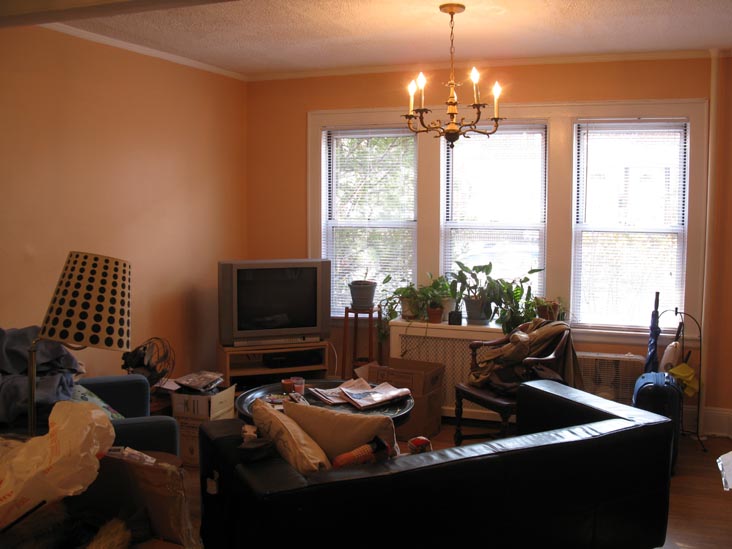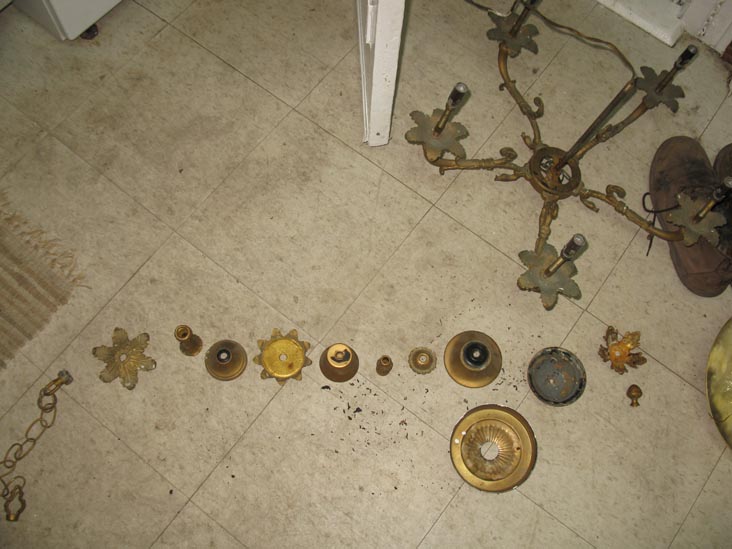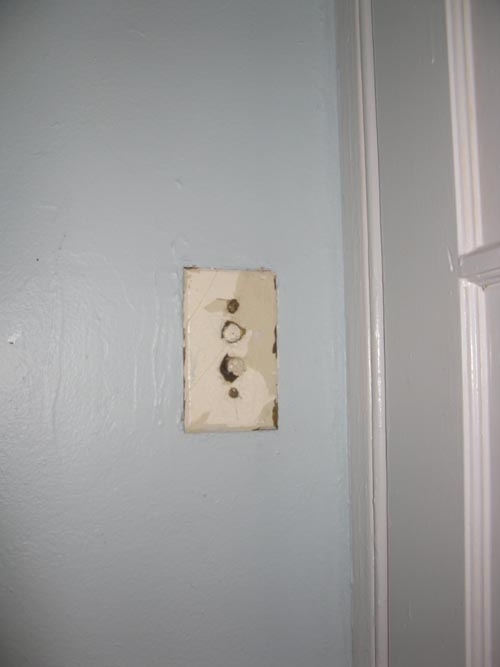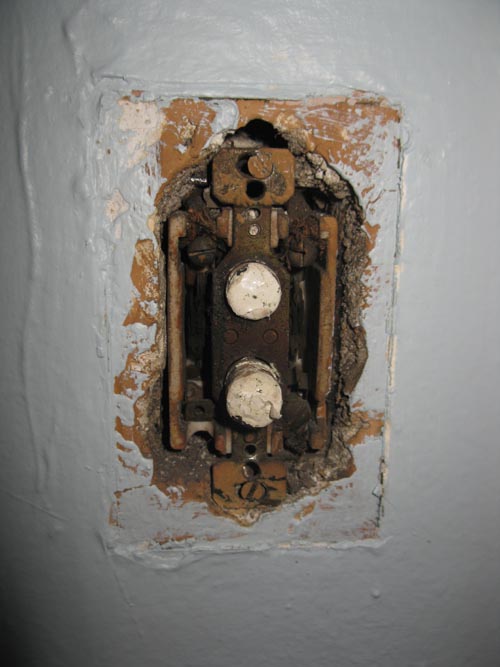A Fluke Is Not Just A Fish
Every good relationship requires compromise, and when Jen decided that the chandelier light fixtures in the dining room and the living room needed to be painted, and I didn't really feel like painting them, I eventually ended up painting them.
Now you may be wondering, as we wondered, why there was a chandelier light fixture in the living room. I don't know the answer to that. But it was there and needed to be painted.

Like I said, I wasn't terribly interested in taking down light fixtures and painting them. I wasn't too secure with my ability to take them down, paint them and return them to where they belong and work again.

Now the thing I love about electricity — and plumbing, for that matter — is that it's usually pretty simple. You connect something, hopefully correctly, and it turns on. It's like logic on a practical scale. So when the chandelier fixture in the dining room stopped working, it was really disconcerting.
I have to admit that I have no idea what I did to make it stop working, or if I even did anything and it stopped working. Frankly, it would have been better if I unscrewed it from the ceiling, pulled the wires down from the crawl space and cut them in two because at least then I'd know why it stopped working.
I tried everything — changed the light switch, stripped the wires and reattached them, switched the wires around, switched the wires around on the light switch, switched the fixture from the living room into the dining room. Nothing was happening.
Then the madness began. I like Googling my way out of problems, but electricity questions are something that you don't want to Google — the discussion of currents and positivity and negativity is almost too mystical. Basically the only advice I could discern was to call an electrician.
I kept retracing my steps, trying to figure out what I undid. For example, I knew the light fixture in the dining room was connected to the main circuit that travels throughout the house. In our case, we have seven circuits — two for the air conditioner outlets in the two bedrooms, one for the kitchen, one for the boiler, I guess a few others and then this one for basically everything else — the basement, the other stuff in the bedrooms, the staircase light, the hallway lights and then of course the dining room, which is what the chandelier was connected to.
So then I noticed the lights in the basement were weak — where they weren't before. At first I assumed the fluorescent bulbs were going out — and I had no idea how old they were since we just bought the house — but then I got to Googling and learned that dim lights can be the sign of something, too. Something bad about weak current. Something I didn't want to be true.
On a hunch I decided to switch my computer arrangement to the air conditioning outlet in the one bedroom. I was getting ready to switch off that main circuit to work on the lights when, lo and behold, the chandelier started working again.
Like I said, I want to assume it was something I did, so I went back and listed everything I did. Jen had a friend at work who was a contractor, and we were going to run it by him.
One of the first things we did was change the light fixtures in the bedroom and bathroom, which are both on the same circuit as the chandelier — I didn't think this caused the chandelier to stop working, but I forget the time frame.
Another thing I did made more sense because it just looked old and fucked up and looked like it could screw up something. Basically, when I painted in the stairwell, at the top of the stairwell there was this ancient light switch plate behind the door that we never open. I took off the light switch to paint and when I did, the switch was stuck in a half-on-half-off position from years of paint and I played around with it. I assumed it was a non-working switch. It looked like it was a gazillion years old, and every other light switch in the house had been updated except for this one.

But maybe they just forgot about it since it was behind the door in the stairwell and they missed it. Maybe they assumed it didn't work either. (Or perhaps they knew not to touch it; "Don't Touch It!" is the main lesson of everything I've learned about fixing stuff in the house.)
Maybe when I put the light switch plate back on, it jarred the switch. Maybe that shorted out the other switch. Maybe the chandelier fixture stopped working around this point. I wasn't really sure of anything, but I couldn't think of what else it would be. And when you look at what's behind the switch plate, you think this has to be what went wrong.

Eventually I tried turning this old switch off and on and what I assumed was a vestigial switch actually controlled the light in the dining room down at the bottom of the stairs.
So that was that — mystery solved. Except that I'm pretty sure I tried all this stuff before. Jen's contractor friend's advice: "Call an electrician." Which is what basically everyone on Google says, too.
So fast forward a few weeks — we were getting a circuit installed in the basement for a washer/dryer hookup and once everything was going along OK I inquired about it. It was one of those questions that you're not sure you want the answer to, so I prefaced it by making it clear that everything was basically working fine now.
He just shrugged.
"It was probably just a fluke."
A fluke?
"A fluke."
Which was the best answer I'd ever gotten.
Posted: January 25th, 2012 | Author: Scott | Filed under: The Cult Of Domesticity | Tags: Don't Touch It!, Hackneyed Relationship Advice, Inappropriate Light Fixtures, Kawama, The Brilliance Of The Fluke, The Mystical Quality Of Electricity

